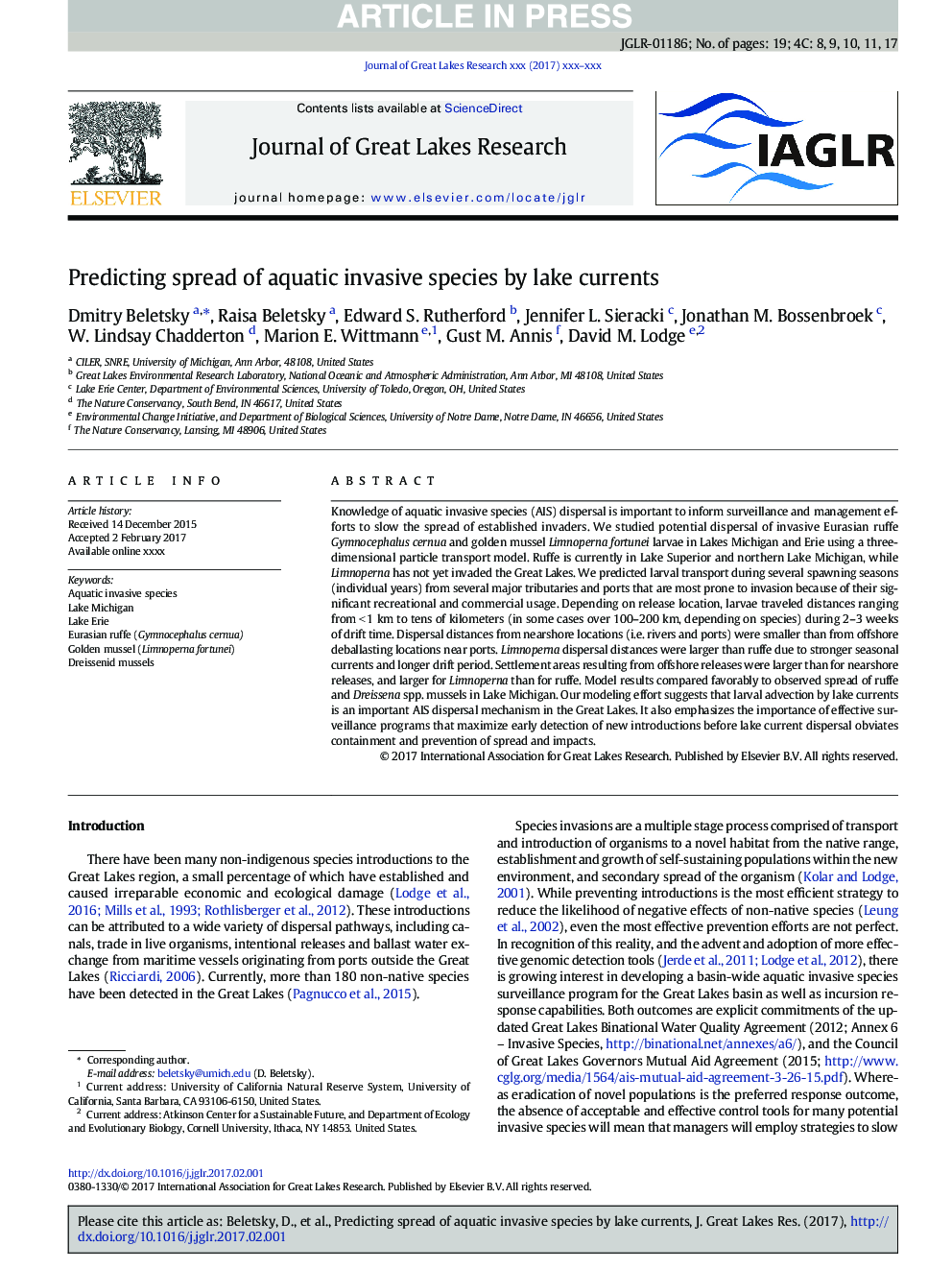| Article ID | Journal | Published Year | Pages | File Type |
|---|---|---|---|---|
| 5744614 | Journal of Great Lakes Research | 2017 | 19 Pages |
Abstract
Knowledge of aquatic invasive species (AIS) dispersal is important to inform surveillance and management efforts to slow the spread of established invaders. We studied potential dispersal of invasive Eurasian ruffe Gymnocephalus cernua and golden mussel Limnoperna fortunei larvae in Lakes Michigan and Erie using a three-dimensional particle transport model. Ruffe is currently in Lake Superior and northern Lake Michigan, while Limnoperna has not yet invaded the Great Lakes. We predicted larval transport during several spawning seasons (individual years) from several major tributaries and ports that are most prone to invasion because of their significant recreational and commercial usage. Depending on release location, larvae traveled distances ranging from <Â 1Â km to tens of kilometers (in some cases over 100-200Â km, depending on species) during 2-3Â weeks of drift time. Dispersal distances from nearshore locations (i.e. rivers and ports) were smaller than from offshore deballasting locations near ports. Limnoperna dispersal distances were larger than ruffe due to stronger seasonal currents and longer drift period. Settlement areas resulting from offshore releases were larger than for nearshore releases, and larger for Limnoperna than for ruffe. Model results compared favorably to observed spread of ruffe and Dreissena spp. mussels in Lake Michigan. Our modeling effort suggests that larval advection by lake currents is an important AIS dispersal mechanism in the Great Lakes. It also emphasizes the importance of effective surveillance programs that maximize early detection of new introductions before lake current dispersal obviates containment and prevention of spread and impacts.
Related Topics
Physical Sciences and Engineering
Earth and Planetary Sciences
Earth and Planetary Sciences (General)
Authors
Dmitry Beletsky, Raisa Beletsky, Edward S. Rutherford, Jennifer L. Sieracki, Jonathan M. Bossenbroek, W. Lindsay Chadderton, Marion E. Wittmann, Gust M. Annis, David M. Lodge,
